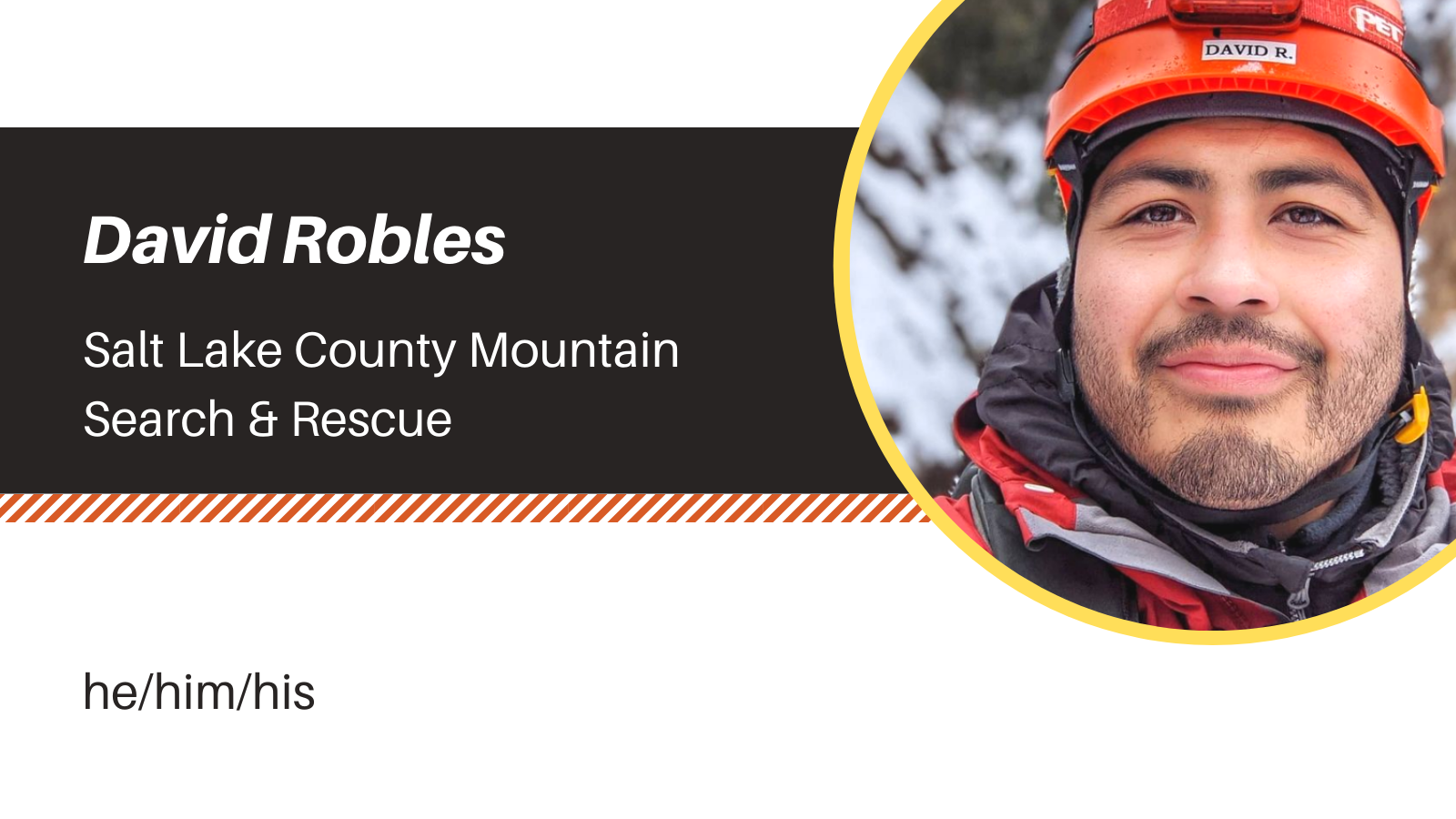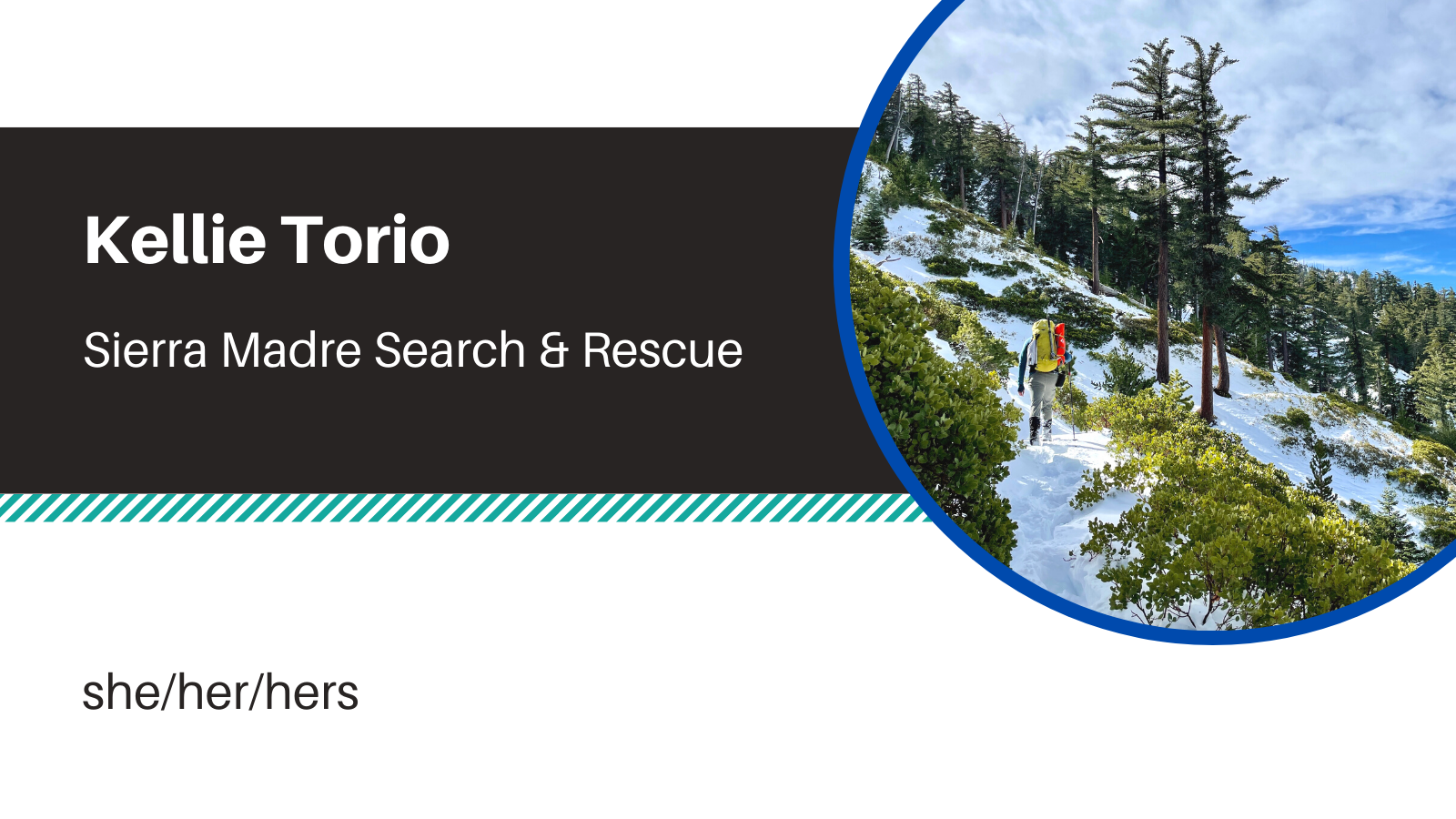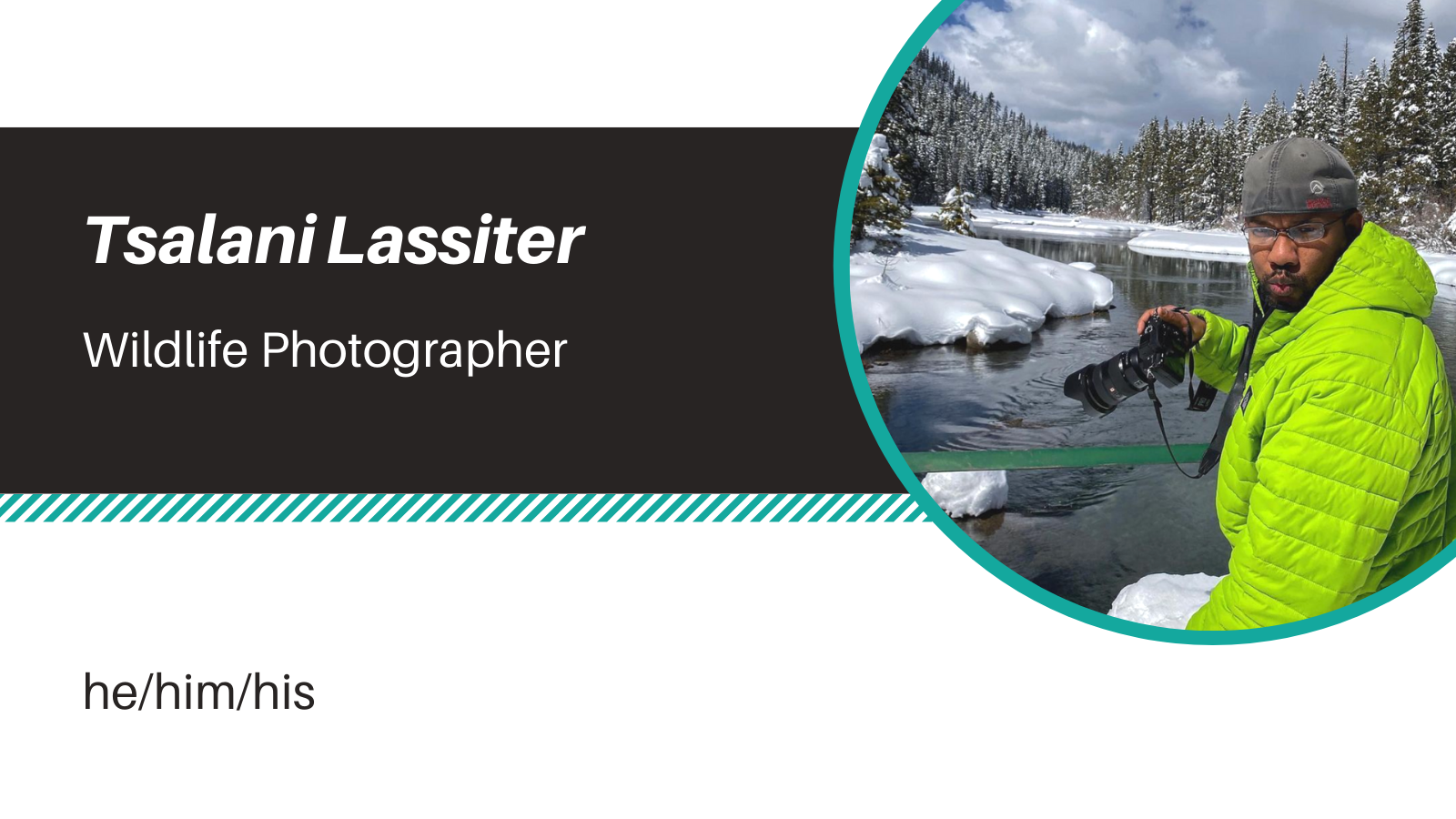Melanin Base Camp Winter Hiking Guide
Remember summer, when so many of us embraced hiking and cycling as a socially distanced way to escape our apartments—even if just for a little while? Even though summer has long since faded into screaming nor'easters, freezing temps and snow drifts, that doesn’t mean you should give up on your dream. The cold is here to stay, but you don’t have to!
Winter can be a great time to explore your local landscape and gain a new appreciation for its changing state. Whether it's a snowy walk in the park, cross country skiing or mountain sports, the cold season can still bring joy.
If you’re ready to brave the cold, we’ve put together a how-to guide to help you get outside this winter. It includes best practices from three cold weather experts.
David Robles is a Mexican American volunteer with Salt Lake City Mountain Search & Rescue
Kellie Torio is a Chinese-Filipina American volunteer with Sierra Madre Search & Rescue
Tsalani Lassiter is a black Peruvian American wildlife photographer
What to Wear
Kellie: Bring sufficient clothing. I default to Capilene® baselayers and keep extra merino wool layers for colder days/overnight trips. I also have a list of winter items I’ve accumulated over time.
Tsalani: I highly recommend a good winter jacket, water resistant/proof pants, and good boots. Also, having a good backpack is key. It should be waterproof or water resistant to keep your items dry and large enough to carry the gear you need to keep safe.
When you think about dressing for cold weather, it can be easy to just keep piling on layers. However, you don't want to be wearing so much that you're sweating a lot during your hike. That could become a dangerous situation once you start to cool down. The key to not overdressing is to remember that once you get moving you'll warm up quickly. You can put your layers in your backpack when you're hot and pull them out again when you're cold.
I also like waterproof everything. Once you get cold or wet it’s really hard to get warm again. I love wool base layers. They are amazing at keeping you warm and naturally odor resistant. Lastly, I definitely recommend having a modular setup. Depending on the weather and my destination I switch up what I bring.
David: All of those are extremely important. If you are a hiker spending time outdoors year round, become knowledgeable of your hiking inventory, especially for winter. What do you currently have? Are these items necessary? Are these items safe? And, could these items save your life? All very important questions to ask.
“Once you get cold or wet it’s really hard to get warm again”
Photo credit: Elijah Burton
Hypothermia is a real risk. Too few layers, non-insulated footwear, or even too many layers add to that. Yes, you read correctly; excessive sweat will cool your body temperature and put you at higher risk of cold weather injuries. It is so important to practice layering, delayering, layering, and delayering.
MBC: Layering is the key to success. Dress in multiple loose-fitting layers of synthetic clothing with a thin and moisture wicking baselayer closest to your skin. Merino wool, wool, fleece and synthetic fabrics like Capilene® are great for this. Think athletic wear for running in the cold if you need a reference for what might work well. Check labels and ask questions! You’re looking for moisture wicking fabrics that dry quickly and will help you retain heat.
Invest in water resistant and windproof gloves and liners. Your fingers may stay warmer in one style (mittens vs five-finger) over another so try both.
Invest in a hard shell jacket to wear over your layers. This will lessen the effect of wind, snow, and rain while helping you retain body heat.
What To Bring
Kellie: When I'm planning a winter hiking trip, I won't leave my house without my winter duffel which includes the following: snow shoes, crampons, ice axe, gaiters, trekking poles with baskets, a blizzard bag, extra merino wool/Capilene® layers, winter boots, avy probe, shovel, beacon, ski goggles or glacier glasses, heavy snow gloves, softshell gloves, sleeping pad, white gas stove or Jetboil, waterproof matches, lighter and fuel and a bivy or tent.
Throwing the entire winter duffel in my car allows me to add or remove items from my pack at the parking lot after assessing snow conditions at the trailhead. After trial, error, and even searches, I've found it's always easier to take everything with me and pack my gear in the parking lot. It's not lost on me that winter sports are such a huge investment, even hiking.
Tsalani: When hiking I always bring my cell phone, jacket, and a solid pair of boots. Also, no matter how short the hike, I always carry my backpack with snacks, water, knife, small first aid/survival kit, and extra batteries. Everything I carry is pretty small and lightweight because I have to devote space for the camera stuff.
David: This one is tough to answer. Sometimes we encounter hikers who forget to charge their cell phones and are unable to call for help when needed. A full battery can play a major role when getting lost, injured, or stranded. Other times we have distressed hikers who forget to bring headlamps. The sun sets a lot quicker during the winter months and hikers can end up lost or stranded simply because they forgot one of the essentials—light!
MBC: Investing in a few key items will help you get outdoors and stay warm this winter. It’s also important to acknowledge that winter gear can be costly and time consuming to accumulate. If you’re just getting started, make sure you consider your specific needs. For example, if you use forearm crutches, grip caps and snowshoe assemblies may be worthwhile investments for winter hiking, along with crampons or microspikes. If your day hike itinerary doesn’t involve camping, maybe skip the tent. However, you still may want to pack extra layers, boots or socks. We recommend that you start with the ten essentials and build out your winter hiking gear from there. For strategies on how to build your gear closet on a budget, check out this article.
Choose Appropriate Footwear
Kellie: Proper footwear is key! Bring hiking boots that are winter specific, not boots that simply list 'waterproof' in the specs.
David: Although I don't encounter as many rescue call-outs for hikers during the winter months, there are usually a few main reasons why a hiker ends up in distress and a lower extremity injury caused by slipping on snow and ice is one of them. Crampons or microspikes are the best set of tools to lower the risk of slipping on ice.
MBC: There are numerous options for winter boots with low, medium or high degrees of insulation. Find something with ankle support and a reasonably thick sole to keep your feet well insulated from the snow. If you are ready to venture into deeper snow, explore snowshoe rentals. Packing an extra pair of thick warm socks is also a good idea. Whether you need an emergency pair while out or just want to switch into a totally dry and warm pair when you get back to the car, sacred socks are a boon on any trip.
Do Your Research
Kellie: If you're heading out on an unfamiliar trail, I can't emphasize enough how important it is to have a plan. This includes establishing a turn-around time, checking the weather, knowing the terrain statistics (mileage and elevation gain), and most importantly, leaving your trip itinerary with someone at home.
My itinerary includes:
Who I'm going with & contact numbers
Trailhead / starting point
Destination
Start date and time
Estimated end date and time
Emergency Contact Information
For lost/overdue hikers, these are important questions that search and rescue teams will ask friends and family. If you're absolutely lost, try to keep warm and stay put.
Photo courtesy of David Robles
Tsalani: Do your research first and start early. In the winter, days are shorter and it gets dark and cold fast. Take the time to look at a map, even if it’s Google maps, before you head out. Take note of terrain features—a mountain peak, lake, or bend in a river—that you can use later to keep track of where you are. Lastly, let someone know where you are going and stick to your turn around time. Give yourself plenty of time to make it back home safely.
David: If you decide to hike a new trail this winter—alone or with another person—be sure that all parties involved are knowledgeable and have an idea of what to expect. Have a contingency plan for deteriorating weather conditions. Imagine the snowpack being so high that trails become less and less marked. Cell service can become spotty and the likelihood of someone getting lost increases while hiking in the snow. In addition, there aren't many hikers on the trails during the winter months. This could leave you stranded for a long time (or forever) before encountering someone that can provide you direction. Checking the weather, plotting your path on a GPS beforehand, and packing sufficient food, water, and layers can be the difference between life and death.
Winds, precipitation and weather warnings are all extremely important to be aware of. If winds are high, what does that mean for your potential hike? How will winds from the northeast impact your hike as opposed to winds from another direction?
These questions should not only dictate the type of footwear and clothing you’ll wear; they’ll also empower you to make an informed decision about whether or not you should be hiking the trail. Part of checking conditions is trail etiquette. If the trail is extremely muddy, it is best to stay home since trekking on muddy trails can warrant future trail maintenance.
MBC: Check the road conditions to and from your destination as well as the weather. Avoid heading out during storms and make sure your vehicle is up to the conditions that you will be driving in. Winter weather doesn’t just impact trail conditions, it affects your pace, your body’s ability to keep warm, and even the performance of essential items like your cell phone battery. You’ll be using a lot more energy to move through the snow or balance on icy trail surfaces than you might otherwise. Moving slower will allow you to manage your temperature and energy levels so you can get where you are going without overtaxing or injuring yourself.
“Hypothermia is a real risk [...] It is so important to practice layering, delayering, layering, and delayering.”
Empty trails during the winter are nice but if you get into trouble it means fewer people will be around to assist you quickly or at all. So plan accordingly. Bring a first aid kit and don’t leave it in the car. Make sure it’s easily accessible on your day pack and not stored out of reach at the bottom of your bag.
Bring a friend! While there is beauty in the solitude of winter hikes, consider hiking with a friend this winter. Plus, having a snowball fight by yourself is difficult.
Make sure you know as much as possible about your route and destination before you go. This means knowing what trail markers to look for and researching recent closures, washouts or trail hazards. Usually a quick Google search can lead you to a recent trip report for most popular trails. Checking with the ranger stations associated with a trail system will give you clear first hand information as well along with some local knowledge that may be missing from online blogs.
Know Where You Are
Photo credit: Adam Edwards
MBC: Make sure you have a map + compass, GPS, or fully charged (and kept close to your body) phone—preferably, at least two of those items. Winter landscapes tend to blend together so make sure you are taking note of trail signs or mileage in order to stay on track.
Kellie: I use the Garmin 64 Series, the GAIA GPS app and a paper map with compass. Both the GPS and Gaia are great and easy to use, but a map and basic compass knowledge can go a long way when the cold weather drains your batteries. Plus, it's just a rad, easy skill to keep in your back pocket.
Tsalani: I do not use a GPS other than my iPhone. I like to use the GAIA GPS app and pre-downloaded maps for the area I am in. I always start tracking in the app when I begin my hike.
Whether you’re planning a backcountry hike or checking out a local park, this guide will help you get outside safely this winter. Start small, figure out your comfort zone and build towards that snowy dreamscape you’ve been vision boarding! To learn how to build your gear closet on a budget, check out A Broke Girls Guide to Getting Gear by Nadia Mercado.





















I can either enjoy my life doing what I love, or sit at home worried about getting assaulted or worse. I choose to take common sense precautions, trust my gut, and hope for the best. But that doesn’t mean I’m never afraid.